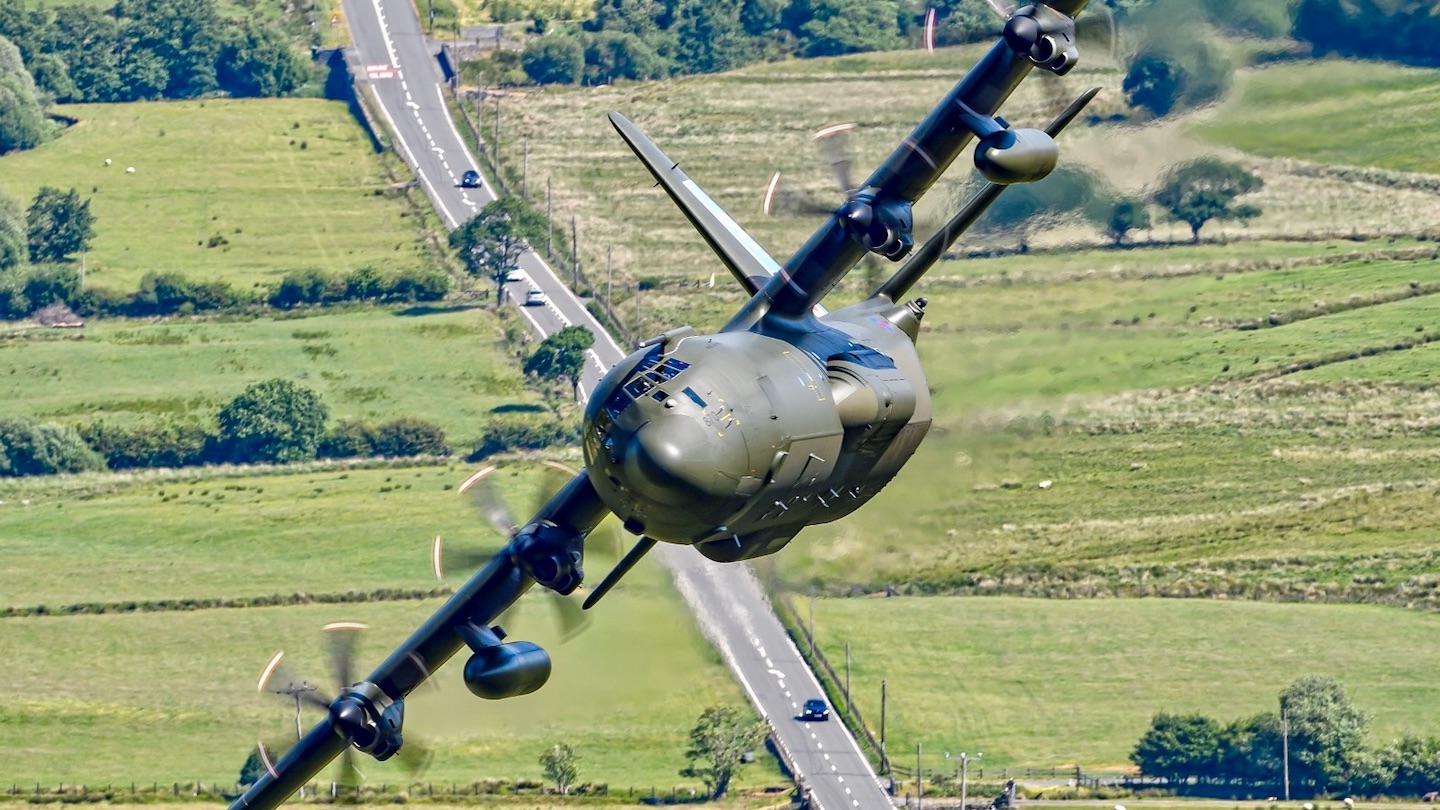A farewell flypast for the Royal Air Force’s C-130 Hercules transport aircraft took place today as the service’s remaining J-models approach retirement later this month. C-130s — starting with legacy C-130K models — have been in operational service with the RAF for 56 years. The retirement of the RAF’s C-130Js marks the end of the Hercules’ use by the service, with the C-130K models having been retired in 2013.
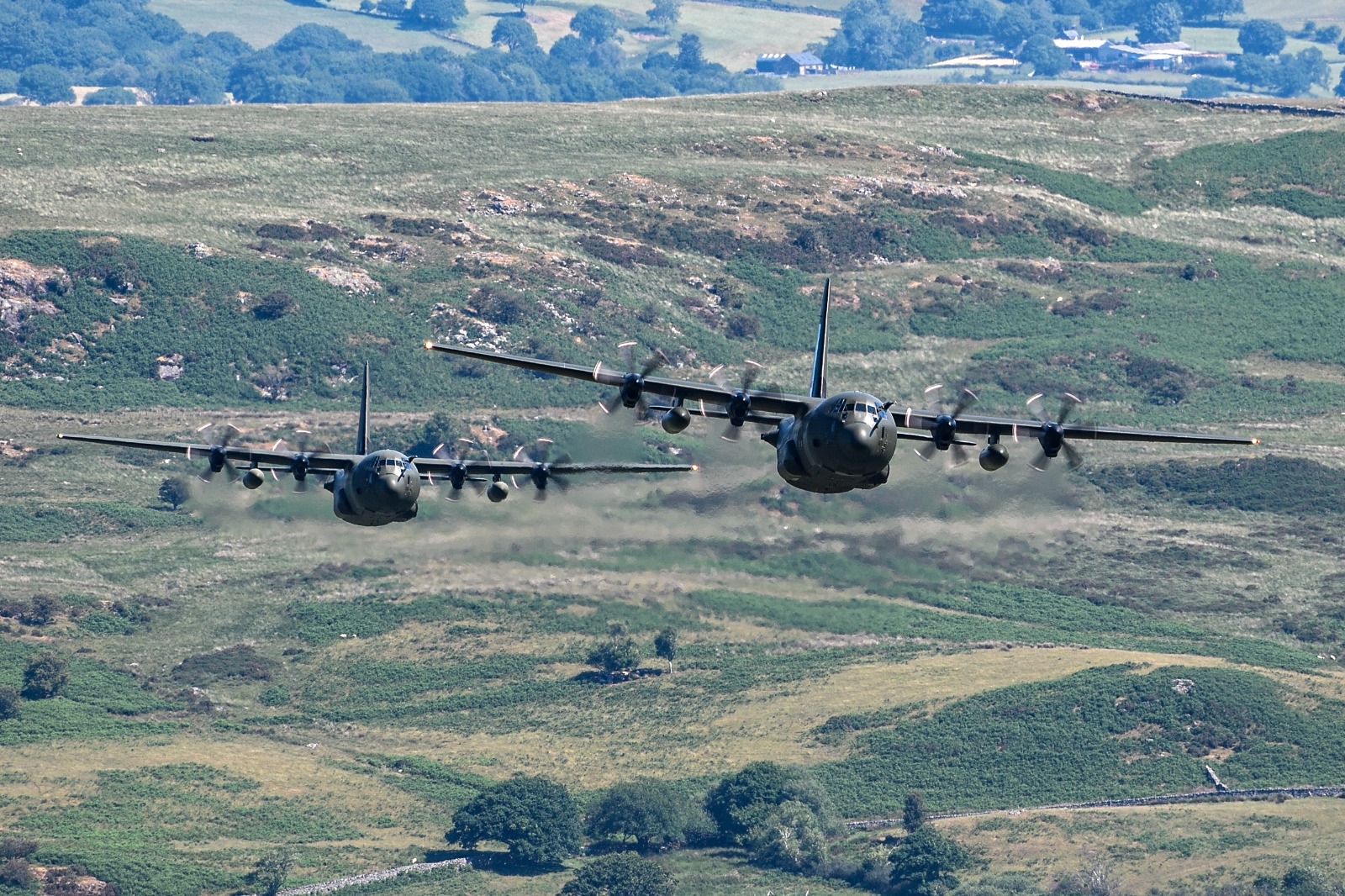
To bid farewell to the C-130, and the standing down of No. 47 Squadron which operates them, three C-130J Super Hercules aircraft embarked on a flypast spanning all four corners of the United Kingdom. The flypast kicked off at RAF Brize Norton in Oxfordshire – home of the RAF airlift fleet – and lasted from around 10:00 A.M. to around 5:00 P.M. local time. According to Group Captain Gareth Burdett, commander of the Air Mobility Force’s Air Wing, just six Hercules aircraft were in RAF service as of April. Both No. 47 Squadron and the RAF’s remaining C-130Js will continue to be available for operations supporting U.K. defense objectives until June 30, according to the RAF.
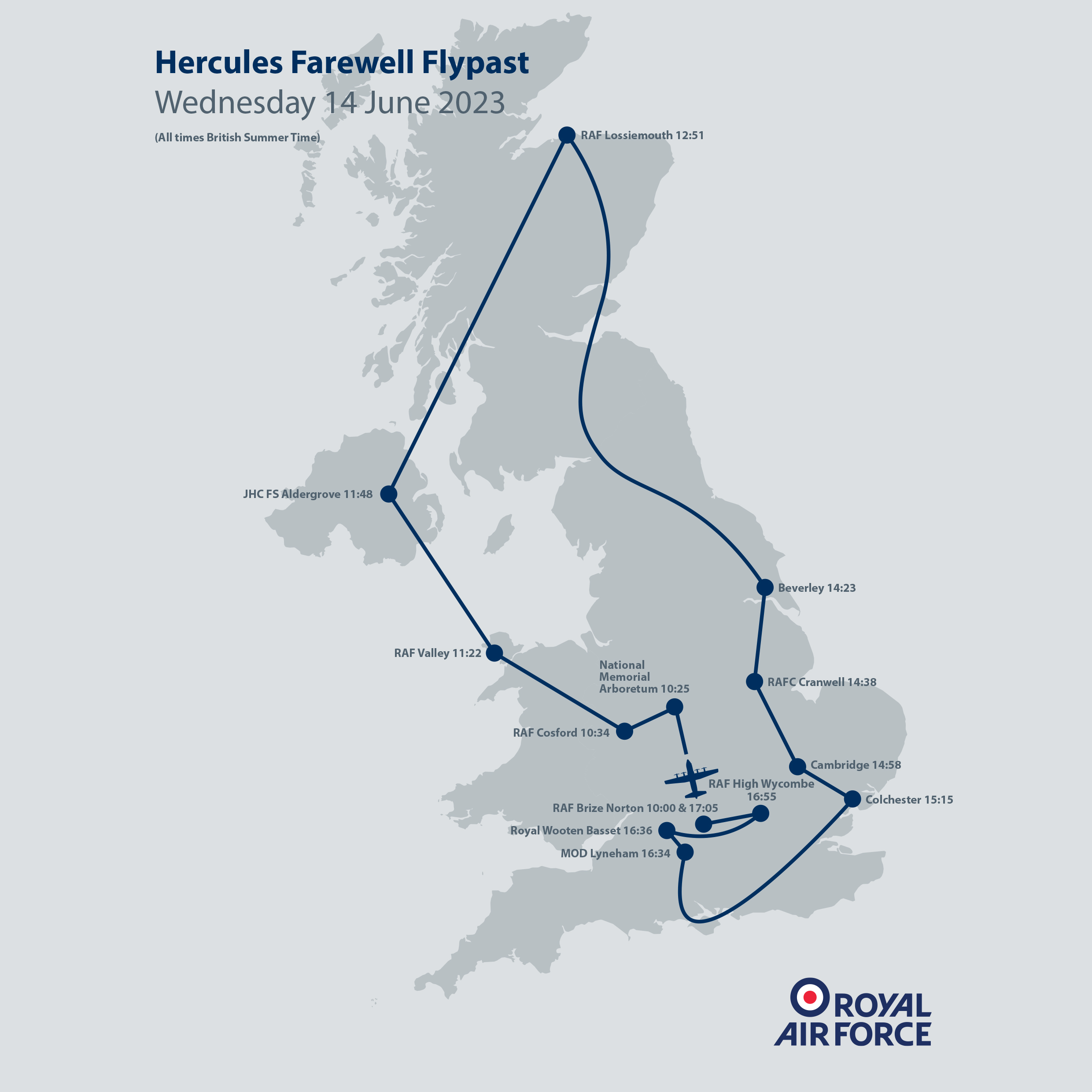
After departing Brize Norton, the three C-130Js traveled north, passing over the National Memorial Arboretum in Staffordshire, before turning west. Overflying RAF Cosford and later RAF Valley on the island of Anglesey, Wales, the aircraft passed over Joint Helicopter Command Flying Station Aldergrove, Northern Ireland, before flying to RAF Lossiemouth in Scotland.
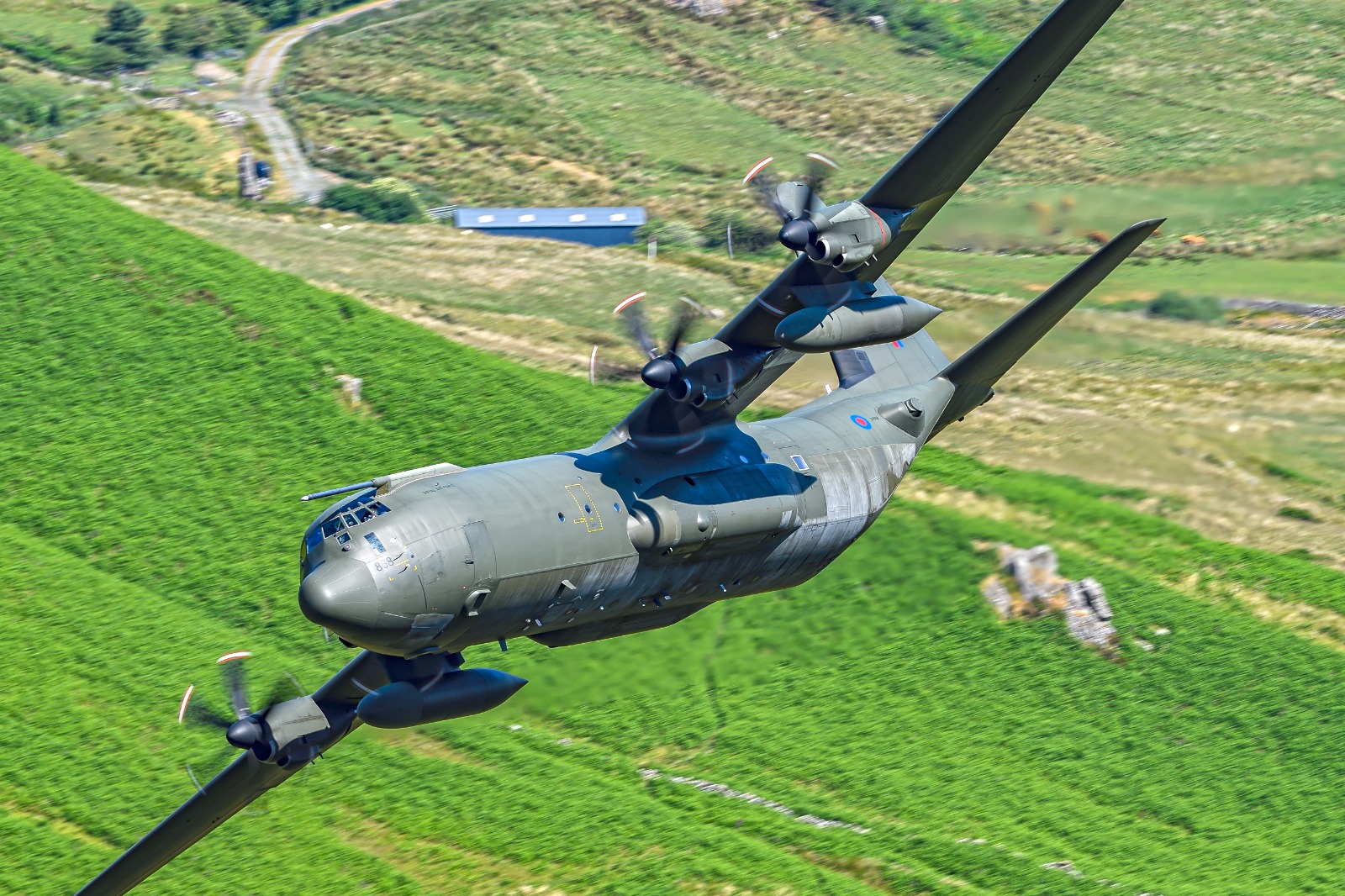
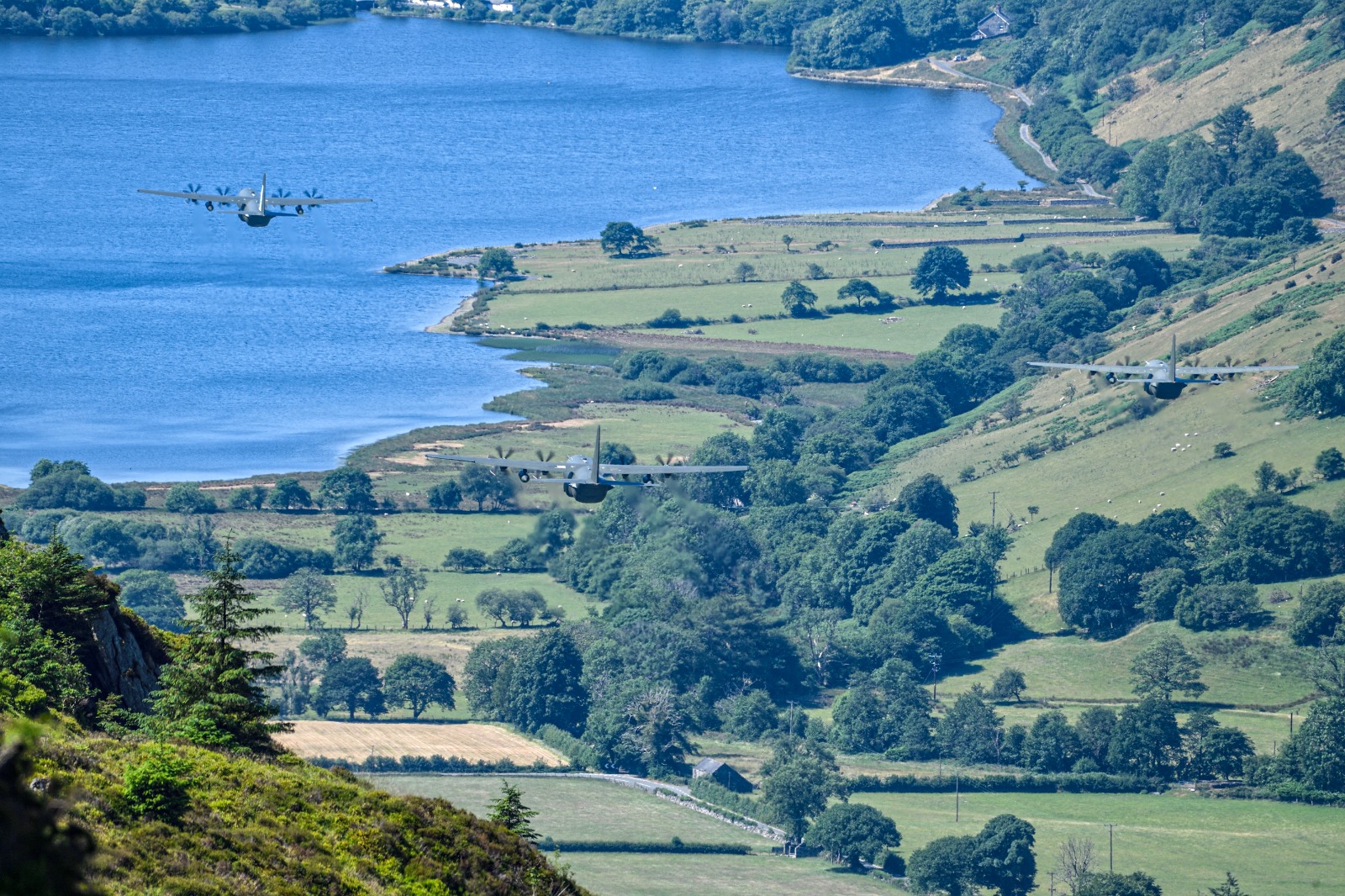
The three C-130Js then flew over eastern Scotland before criss-crossing north west England. After overflying much of eastern England in the afternoon, the C-130Js flew from Colchester down toward the Isle of White before heading north over Wiltshire.
As part of the final phase of the flight, the aircraft overflew RAF High Wycombe in Buckinghamshire. Although the three Hercules aircraft were set to return to Brize Norton in the late afternoon, issues with the temperature of the runway forced them to land at RAF Fairford in Gloucestershire. Owing to the fact that the majority of the RAF’s transport and tanker fleet is based at Brize Norton, issues affecting the air base’s runway during high temperatures, reportedly causing it to melt, clearly poses a significant problem for the RAF.
Events associated with the C-130J’s retirement have been playing out over the past days leading up to today’s flypast. On June 9, for example, Princess Anne – who is honorary air commodore to RAF Brize Norton – attended a stand down parade for No. 47 Squadron at the air base. The event was also attended by past and present members of the squadron.
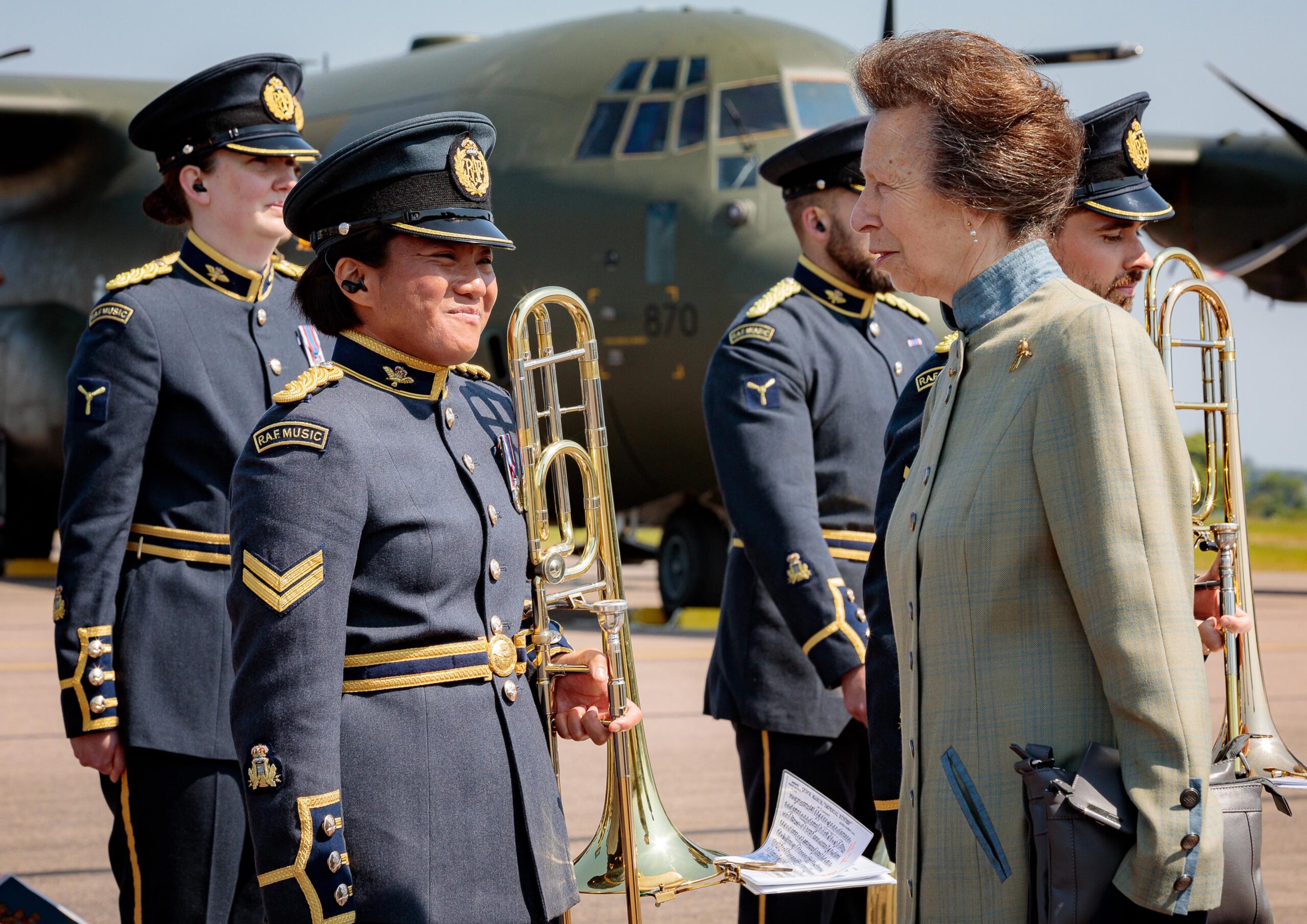

Wing Commander James Sjoberg, commanding officer of No. 47 Squadron, said the following on the squadron’s retirement in an earlier article published by the RAF:
“It is a great honor to command 47 Squadron at this historic moment. I am extremely proud of the people on my Squadron and across the wider Hercules family – they have delivered time and again on operations. Whilst the retirement of the Hercules and the laying-up of No. 47 Squadron standard is a sad moment for many of us, I have full confidence that the people of the RAF Air Mobility Force will continue to deliver excellence around the globe.”
According to the service, the “expertise acquired operating the Hercules and its broad range of capabilities will be transitioned across to the other flying platforms in RAF service.” As such, ground support staff (engineers, air operations and intelligence professionals) will be relocated to similar roles within the RAF.
Plans for the C-130J’s retirement have been a long time coming. The U.K. government’s 2010 Strategic Defense and Security Review earmarked 2022 as the year for their withdrawal from service, decades earlier than previously envisaged. As that report highlights, the decision was made principally in an effort to consolidate the RAF’s air cargo fleet primarily around the Airbus A400M Atlas and C-17 Globemaster III. In 2021, the retirement of the then 14 strong fleet of C-130Js was pushed back to 2023. It was subsequently revealed in late 2022 by the U.K. Ministry of Defense that the remaining C-130J fleet would be made available for sale “between 2023 and 2025” through the Defense Equipment Sales Authority (DESA).
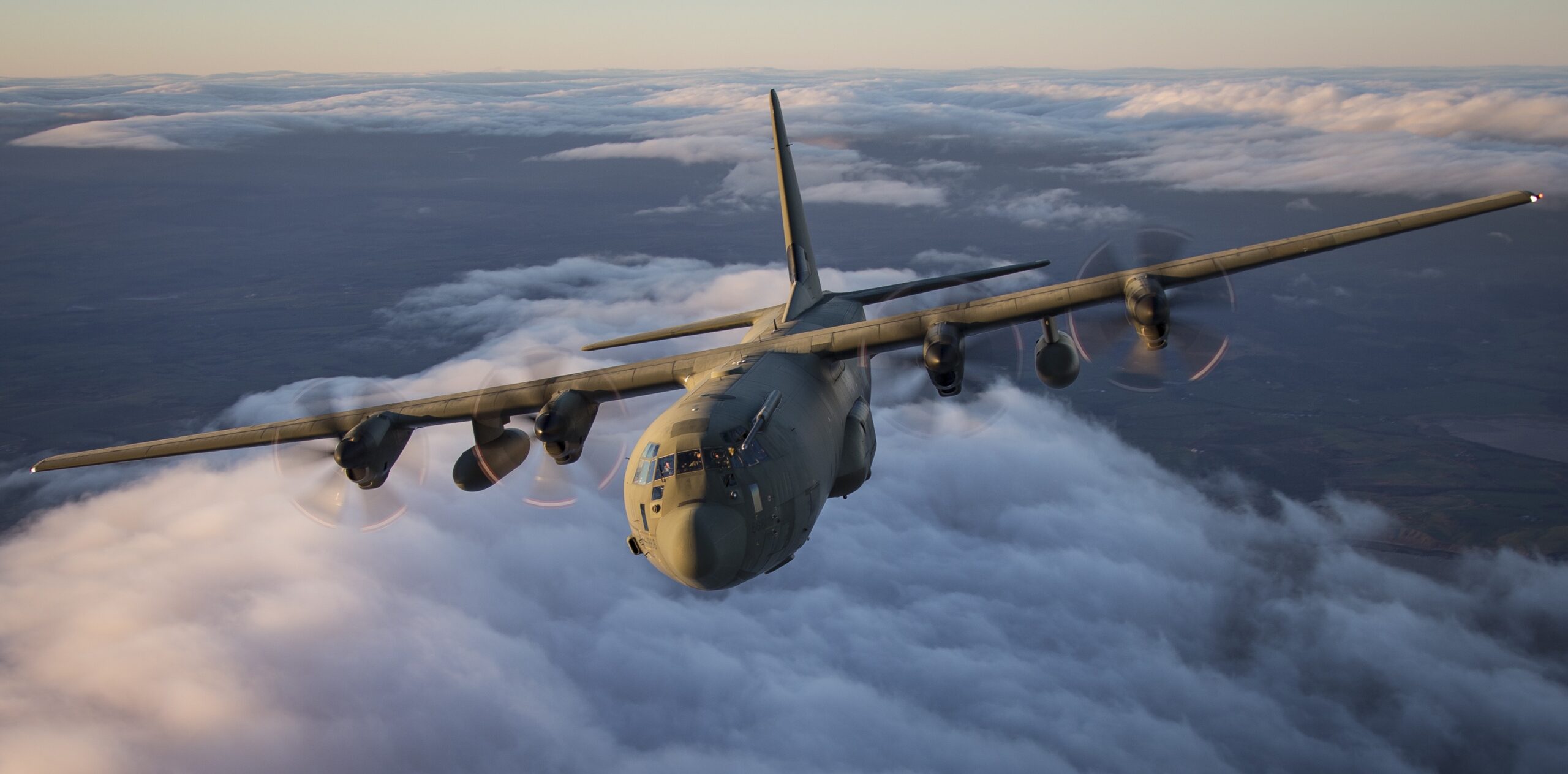
Famously, one of the RAF’s C-130Js has already made its way to the U.S. Navy’s Flight Demonstration Team, the Blue Angels. There it serves in the iconic Fat Albert role.
While the aircraft were slated to be retired earlier this year, the RAF elected to retain its C-130Js until the end of June due to shortfalls in availability of its A400M fleet. The RAF received its 22nd A400M back in May, while the option of additional A400M buys remains up in the air.
Although the RAF has been eager to show off A400Ms at work – with several of the aircraft recently performing beach landing training at Pembrey Sands in West Wales, for example – the decision to switch from C-130Js to A400Ms has prompted heated debate within Parliament and amongst defense experts. Concerns have grown over operational reliability issues and technical faults with A400Ms, including the discovery of landing gear bay corrosion.
“There are a small number of niche capabilities that the C-130J has that will not be transferred across to the A400M program at the point in which the C-130 is retired in the summer [of 2023],” RAF Deputy Commander Capability Air Marshal Richard Knighton revealed to a hearing of the U.K. defense committee in February, Breaking Defense reports.
Tobias Ellwood, MP and Chair of the Defence Committee, expressed concerns during the hearing that taking the C-130J out of service would deny Special Forces “the skillsets they need” to perform their roles. He also noted that doing so would also prevent Royal Marines from performing boat drops from the A400M, as is possible with the C-130J.
Yet as Knighton made clear, “when ministers made the decision in 2021 [to retire the C-130J fleet in 2023] we were very plain with what the niche capabilities were and what the potential operational impact is,” he said during the hearing. “In concert with our operations staff, ministers concluded that, the level of operational risk [outlined] was small enough to be tolerable.”
Moreover, the U.K. Defense Secretary Ben Wallace has remained unequivocal in his defense of the move to A400m aircraft. Speaking to MPs in Parliament earlier in May, Wallace said: “I have heard these tired arguments that what we really need to do is keep the Herc [C-130 Hercules] and get rid of the A400,” Sky News reports.
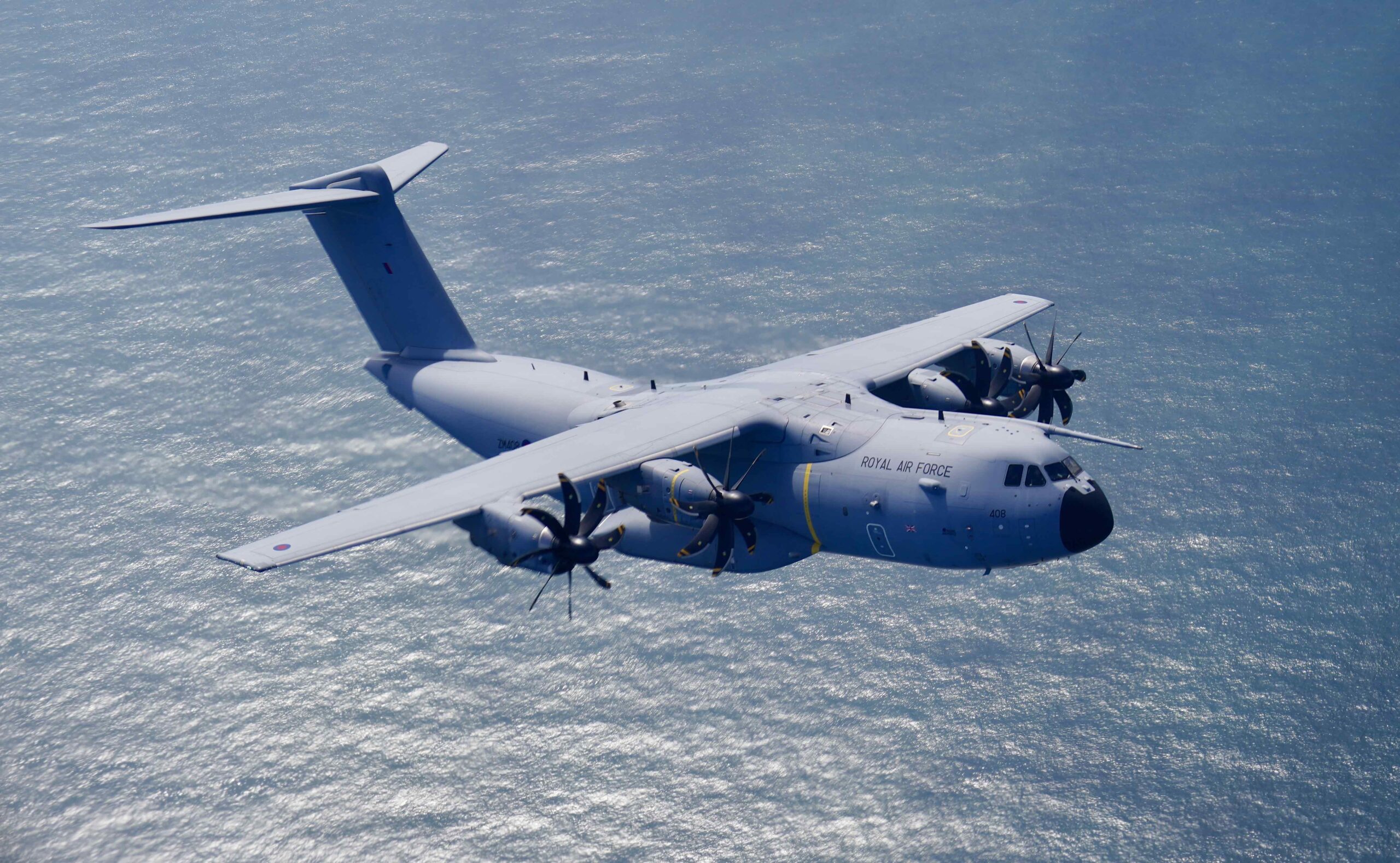
“The A400 outperforms the Herc[ules] on most types – it has got a longer range, bigger capacity, it can land in the same area, in fact it can land in shorter distances,” Wallace argued.
C-130s first entered RAF service in 1967, originally with 242 Operational Conversion Unit at RAF Thorney Island, West Sussex. No. 47 Squadron received its first Hercules in 1968, at which time the Squadron was based at RAF Fairford. The Squadron subsequently moved to RAF Lyneham in Wiltshire in 1971, before relocating to Brize Norton in 2011.
C-130Ks were crucial to U.K. operations during the Falklands War. In December 1994, an order for ten standard C-130J aircraft and 15 of the longer C-130J-30 was placed, with the first delivery of an RAF C-130J taking place in August 1998. C-130Ks and C-130Js were used extensively during the wars in Afghanistan and Iraq. C-130Js continue to be used in operational service, notably for the evacuation of British nationals from Sudan earlier this year.
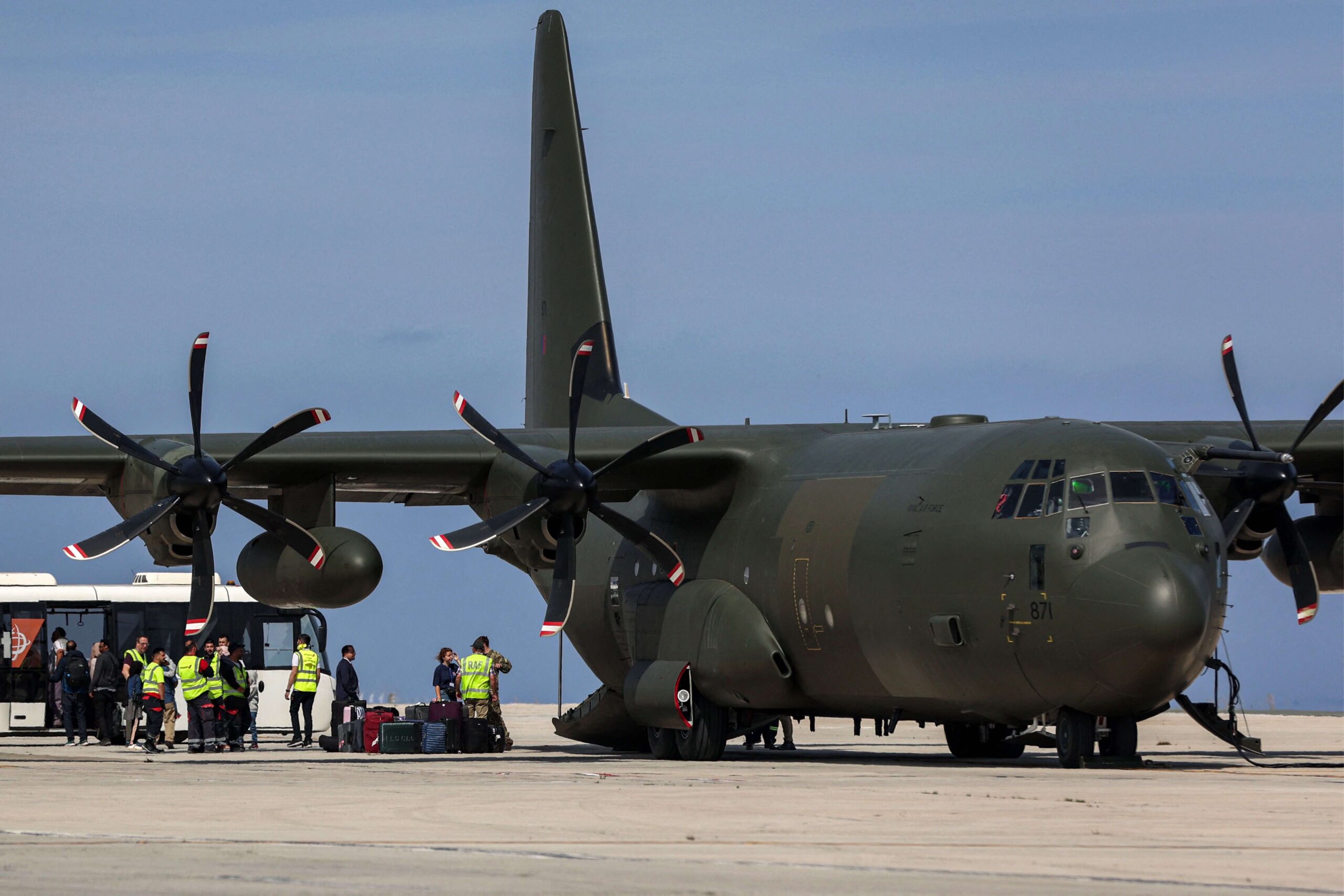
According to Lockheed Martin, more than 2,500 C-130s have been ordered and/or delivered to 63 nations around the world since the 1950s. The aircraft continue to be used by other countries around the world, too – notably Bangladesh which has previously purchased ex-RAF C-130Js.
So there you have it. A fitting send-off to an airframe that has been the backbone of the RAF for more than half a century.
Contact the author: oliver@thewarzone.com
